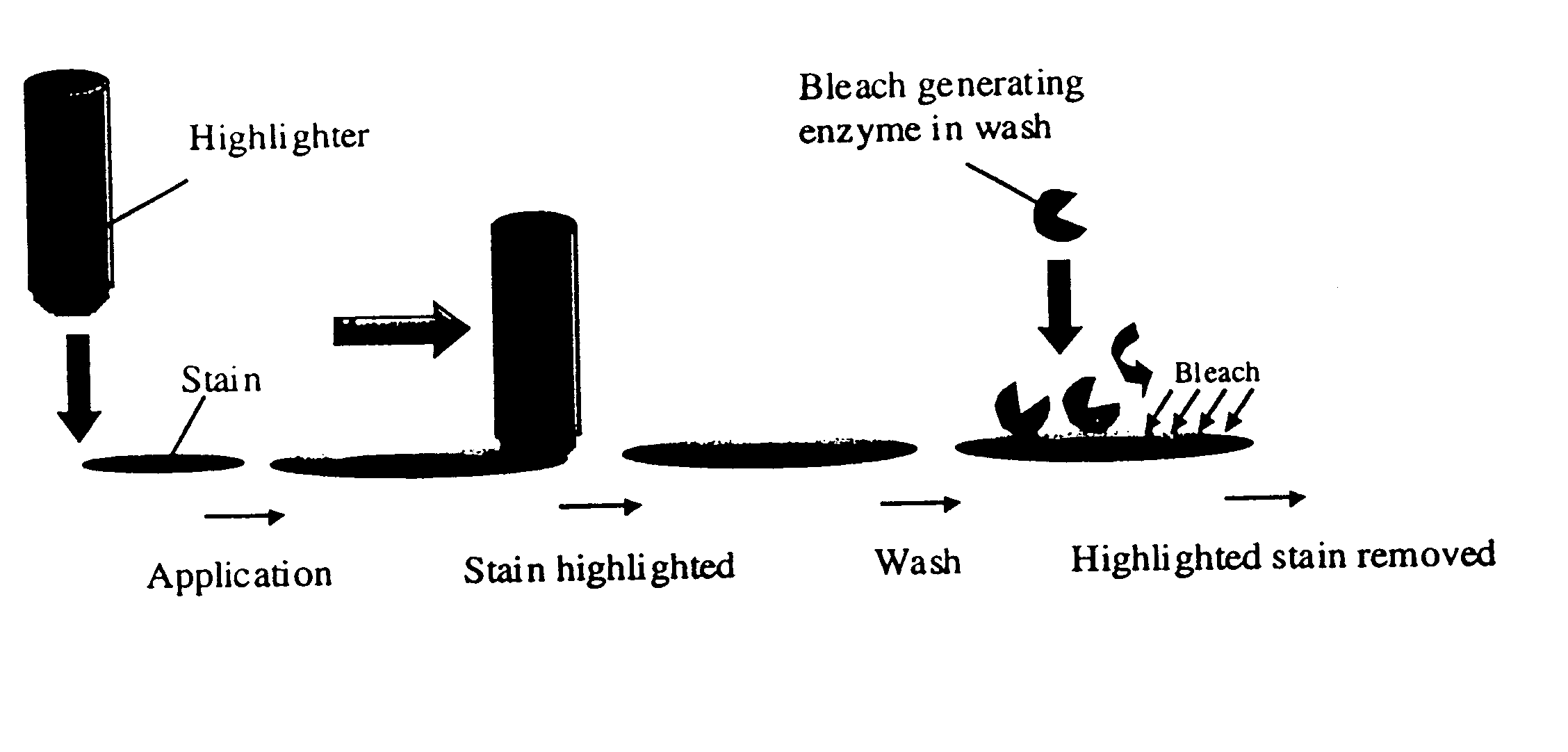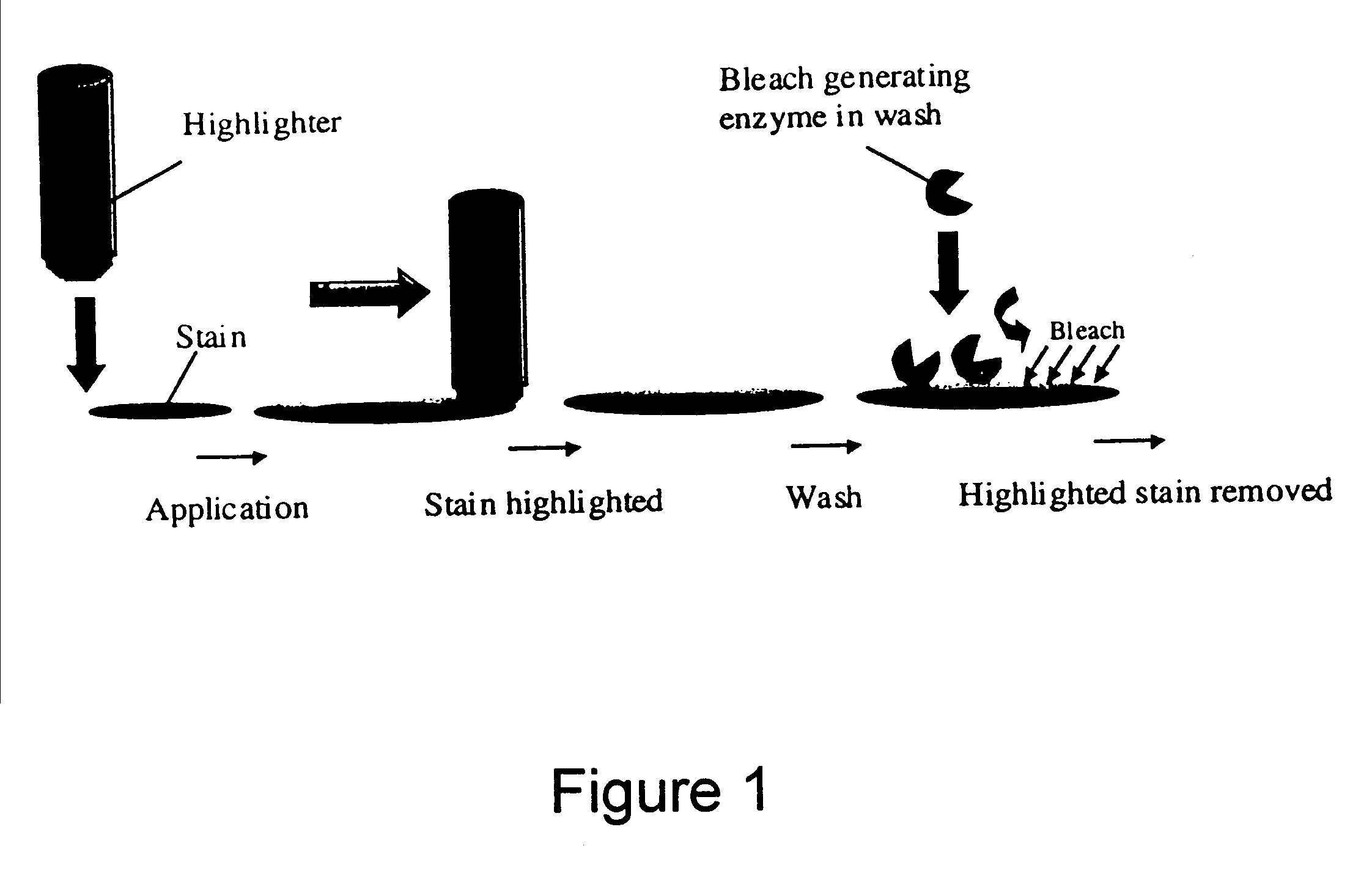Method of treating fabrics and apparatus used therein
a technology of fabric and fabric treatment, applied in the field of multi-specific agents, can solve the problems of inefficient use of the benefit agent and the restriction of the production of such compounds to chemical synthesis
- Summary
- Abstract
- Description
- Claims
- Application Information
AI Technical Summary
Problems solved by technology
Method used
Image
Examples
example 2
Highlighting Polyester Fabric with Antibody
This example demonstrates how non-specific binding can be used to locate an antibody onto a fabric surface.
2.1 Preparation of hCG-Alkaline Phosphatase Conjugate
Human chorionic gonadotrophin ("hCG") (Sigma Chemical Co.), 1 ml of a 2 mg / ml solution of phosphate buffered saline, PBS) and alkaline phosphatase (Boehringer Mannheim, 1 mg / ml of a 10 mg / ml solution in PBS) were stirred at room temperature (10 minutes) in a reacti.TM. vial to allow the reactants to mix. Fresh monomeric glutaraldehyde (Polysciences, 37.5 .mu.l, 10% solution in distilled water) was added and stirred at room temperature for three hours. The reaction was then quenched and the product stabilised by adding 25 ml of 5% ovalbumin made up in 50 mM Tris buffer, pH 7.5 containing 0.1% sodium azide that had been filtered through a 0.22 .mu.m filter. The conjugated hCG was stored at -20.degree. C. until required.
2.2 Highlighting Fabric Surfaces with Antibody
Fourteen 2".times.2" ...
PUM
| Property | Measurement | Unit |
|---|---|---|
| chemical equilibrium constant Kd | aaaaa | aaaaa |
| chemical equilibrium constant Kd | aaaaa | aaaaa |
| chemical equilibrium constant Kd | aaaaa | aaaaa |
Abstract
Description
Claims
Application Information
 Login to View More
Login to View More - R&D
- Intellectual Property
- Life Sciences
- Materials
- Tech Scout
- Unparalleled Data Quality
- Higher Quality Content
- 60% Fewer Hallucinations
Browse by: Latest US Patents, China's latest patents, Technical Efficacy Thesaurus, Application Domain, Technology Topic, Popular Technical Reports.
© 2025 PatSnap. All rights reserved.Legal|Privacy policy|Modern Slavery Act Transparency Statement|Sitemap|About US| Contact US: help@patsnap.com



